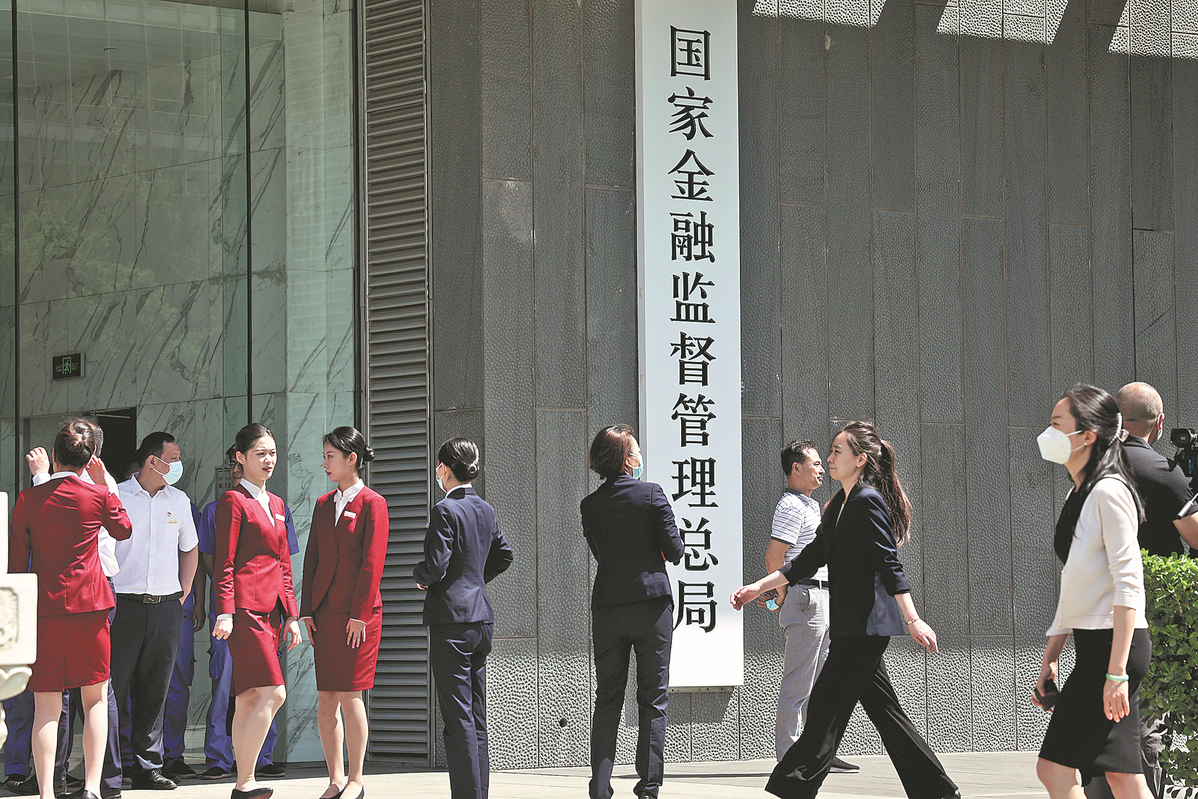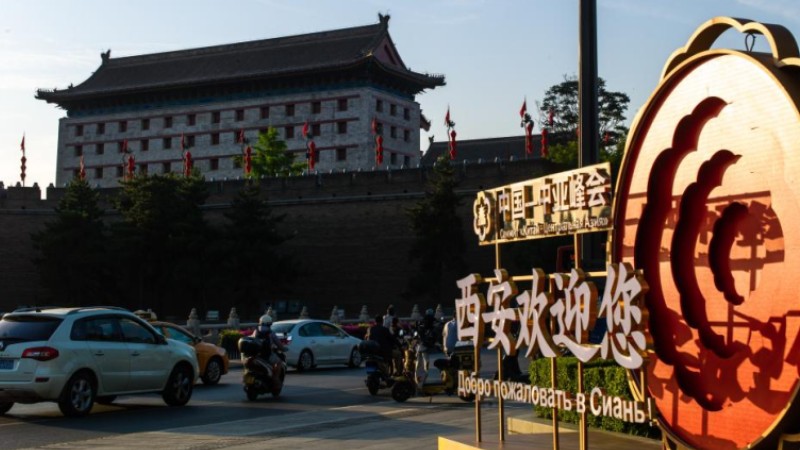Regulator stresses tighter insurance supervision

The National Administration of Financial Regulation is officially unveiled in Beijing on Thursday. [Photo by BAI JIKAI/FOR CHINA DAILY]
NAFR underlines healthy solvency adequacy ratio, prevention of risk
Supervision over the insurance industry, especially over insurers' solvency, should be further strengthened to firmly safeguard the bottom line of preventing systemic financial risks, said the newly unveiled National Administration of Financial Regulation.
The NAFR, which was formed on the basis of the former China Banking and Insurance Regulatory Commission and launched on Thursday, made the above comments at its first work conference.
By the end of the first quarter, the average comprehensive solvency adequacy ratio of the reviewed 185 insurance companies was 190.3 percent, with the average core solvency adequacy ratio reaching 125.7 percent, said the NAFR.
The minimum solvency adequacy ratio for insurance companies is set at 100 percent in China. The regulator will require the insurer to suspend all businesses once the ratio drops below the 100-percent level.
At the end of 2022, the average comprehensive solvency adequacy ratio of Chinese insurance companies was 196 percent.
The decline in insurers' solvency adequacy ratio has narrowed significantly and remains within a reasonable range, the NAFR said at its meeting.
The average comprehensive solvency adequacy ratios of property insurance companies, life insurance companies and reinsurance companies were 227.1 percent, 180.9 percent and 277.7 percent, respectively, by the end of the first quarter.
Meanwhile, the insurance industry is showing better-than-expected growth in the first quarter, with the insurance premium income up by 9.2 percent year-on-year to 1.95 trillion yuan ($280 billion) in the first quarter. The annualized comprehensive investment yield of insurance funds was 5.24 percent, showing a positive trend of recovery, said the NAFR.
While the minimum capital requirement for insurers is set at 2.47 trillion yuan, the actual capital was 4.7 trillion yuan by the end of the first quarter, according to NAFR data.
According to Fitch Ratings, smaller and weaker life and non-life insurers in China are likely to seek additional capital this year to support their solvency positions after organic growth in capital weakened in 2022 due to the global market volatility.
But China's optimized COVID-19 control measures since December, the gradual recovery of its economy and better consumer sentiment will boost insurers' growth momentum this year, Fitch Ratings said.
Market insiders said that Chinese life insurance companies' assumed interest rate will be lowered in June, although the rate was once set at 3.5 percent. The former CBIRC's industry research in March to find out the cost of debt of insurance companies is considered a signal to lower the rate.
Zheng Xinru, a researcher at Zhixin Investment, said the expected lowering will push the assumed interest rate to adapt to market changes, as the five-year bond yield now is 3.12 percent and the five-year deposit rate is set below 3 percent, both of which are quite low compared to historical data.
Fang Guobing, a researcher at the Shanghai National Accounting Institute, said the declining assumed interest rate helps enhance insurance companies' solvency in light of the current macroeconomic situation and the market interest rates. The new policies will further regulate insurance companies' product design and marketing, preventing insurers from passing on high-risk investments to policyholders, he said.
Photos
Related Stories
- China’s financial regulatory shake-up eyes stability, defusing risks
- New financial regulatory body in offing
- China issues regulation on managing, overseeing leading officials
- China to enhance comprehensive safety regulation on e-bicycles
- China requires tighter internal control of wealth management companies
- Top meeting calls for strengthened regulation on online payment businesses
- E-cigarettes under strict regulation in China
- China issues new regulation for handling of public complaints
- China to further strengthen regulation of livestreaming sector
- China issues new regulations on management of soldiers
Copyright © 2023 People's Daily Online. All Rights Reserved.









